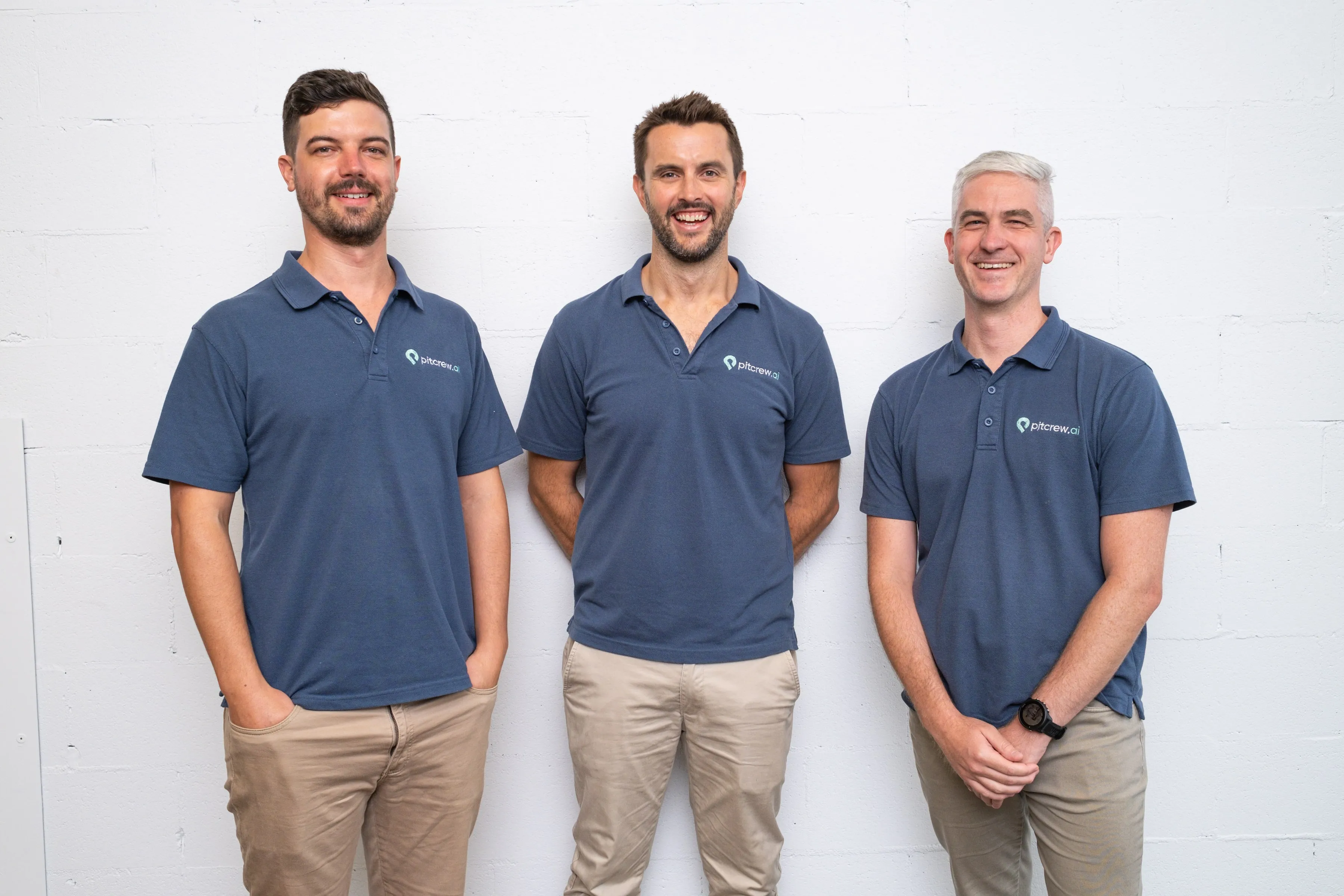Autonomous vehicles are rapidly approaching widespread adoption. We can debate over timelines or whether the movie ‘Transformers’ was in fact a documentary, but in the meantime, the future of self-driving transport is here and knocking at our door.
Founders Tim Snell, Joe Bullock and Pat Ivory have been answering some of these knocks, launching Pitcrew AI in 2020. They’re building an autonomous technician service that monitors, inspects and optimises vehicle fleets.
Leveraging computer vision, thermal imaging technology and Artificial Intelligence (AI), Pitcrew AI is leading the transition towards autonomous vehicles, making transport safer, more sustainable and more efficient.
“Pretty much anything that's going wrong mechanically within a vehicle ends up generating friction and heat.”
“If you detect damage early, you can prevent major accidents, bring down average repair costs and extend a vehicle's lifetime.”
What’s most impressive about Pitcrew AI is the huge success they have had to date and how sought after they are in the market. Since launching they have received non-stop inquiries, from strangers throughout the world pouncing at the opportunity to deploy Pitcrew AI’s innovative tech.
“No one else is using thermal imaging technology in this way. We can solve their problems.”
Starting niche
Pitcrew AI is currently targeting burning rubber in the mining industry.
“Tyres are one of the potentially fatal hazards on a mine site because there’s a risk of explosion. They are huge pressure vessels so if they catch on fire, they can explode and destroy anything nearby.”
This safety hazard and the huge financial cost of repairing or replacing a tyre, or a truck, is compounded by the fact that most mining trucks these days are self-driving.
“Autonomous vehicles are a very real thing in the mining industry.”
“Basically the unofficial control measure for tyre fires for the last 40 years has been a driver's nose. Burning rubber is a really obvious smell.”
With unmanned vehicles becoming commonplace on mining sites and fewer human noses to sniff out malfunctions, there’s a strong case for industries requiring this kind of thermal monitoring technology.
Pitcrew AI’s technical solution is looking like a winner.
This is reflected in their success to date. They have already deployed their hardware on numerous mining sites throughout the world in countries such as Australia, Canada, Chile, Brazil, Colombia and Mozambique.
Three brilliant minds
Joe, Pat and Tim are well and truly acquainted, having worked together for almost a decade before launching Pitcrew AI.
While these founding fathers (founders by day, dads by life) share similar technical expertise, they each bring their own unique perspectives to the table.
“Joe will be the first to tell you I’m not an engineer anymore” Tim laughs.
“These days, I handle everything that isn’t engineering.”
“Between Joe and Pat, there is a lot of knowledge overlap but that’s actually really important in engineering. You want to be able to bounce ideas off each other to make sure the whole thing doesn’t go bust.”
In terms of problem solving styles, the way Pat tackles an obstacle is with brute force and sheer power of will. Joe is a man of precision and efficiency and Tim is the mechanic that works it all together.
“We work so well because we all keep each other level headed.”
Milestones and Setbacks
“Almost immediately after our first LinkedIn post, we had so many inbound emails requesting Pitcrew AI’s services. That was a huge “a-ha” moment for us.”
“I think our biggest milestone was signing a partnership agreement with the largest tyre maintenance manager globally.”
Since launching, Pitcrew AI has had proven success in the mining industry, with several other major players seeking out their services.
“We had executives from huge multinational companies booking international flights to visit our dingy little office in Newcastle. It’s been surreal.”
Hearing these stories, it’s difficult to imagine they could have had any setbacks along the way. But Joe, Tim and Pat assure me they have had their fair share of blunders.
“One of our early systems that we deployed on a client site was washed away during a cyclone.”
They also joke about the time a truck reversed over one of the inspection stations.
“There’s been some serious screwups. It’s moments like these you go; shit, is this going to work? Is that the end of our business? This is expensive hardware that’s just been destroyed.”
“But we’ve learnt from our mistakes and despite some of those early colossal screwups, our value proposition is constantly being validated.”
Visions for the future
“At the moment, we’re aiming to nail this really high-value, niche market. Once we’re happy with that, we can start using the same deployed hardware to do a whole bunch of other mechanical inspections”
Pitcrew AI is set to expand out of tyre inspections and start monitoring fluid blockages, radiator issues, brake abnormalities and pretty much anything and everything else that could go wrong mechanically in a truck.
“By that point, other industries should have caught up.”
“Then we will branch out to other verticals. The construction and transport sector are probably the next industries to become automated.”
Pitcrew AI’s long-term vision is to eliminate the need for humans to do any of the dirty, dull, dangerous work required to support autonomous vehicle fleets. That will include everything from aircraft, trains, buses, drones, your self-driving car, you name it.
Needless to say, Pitcrew AI is poised and ready to capture the future of autonomous vehicles.






.png)

